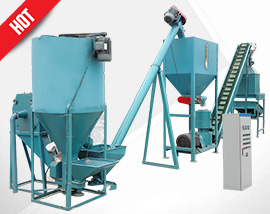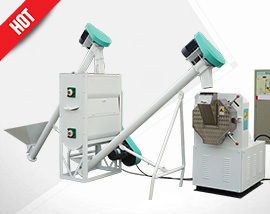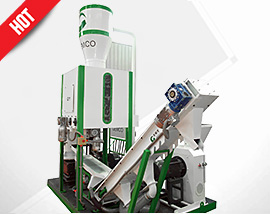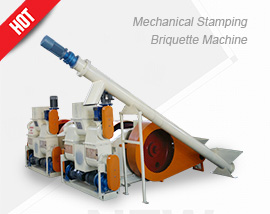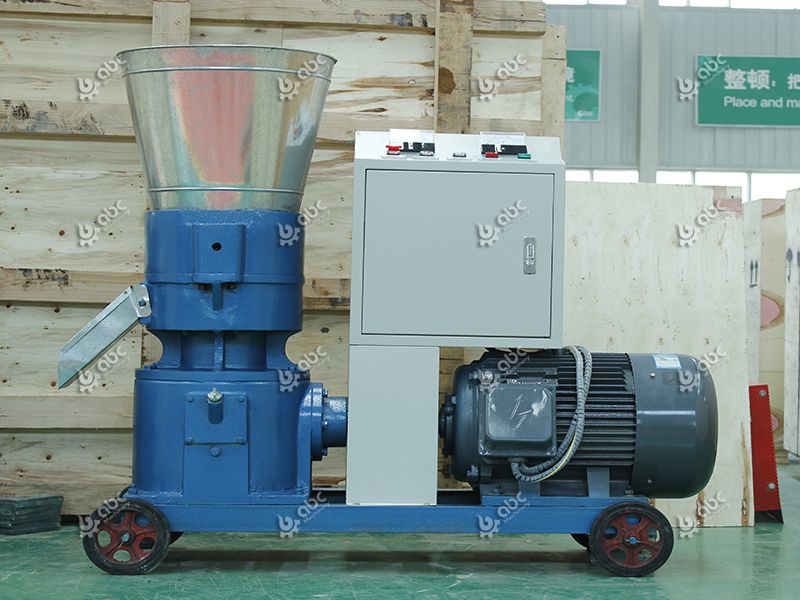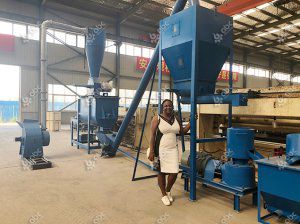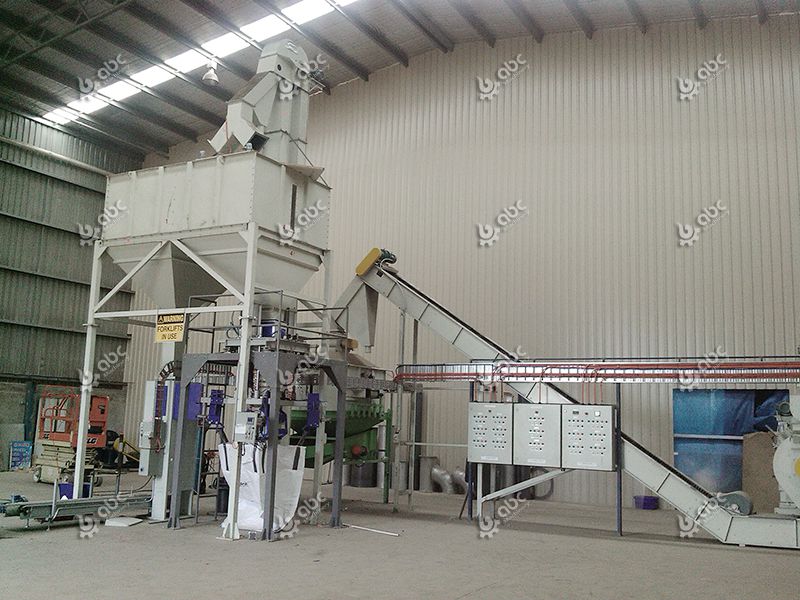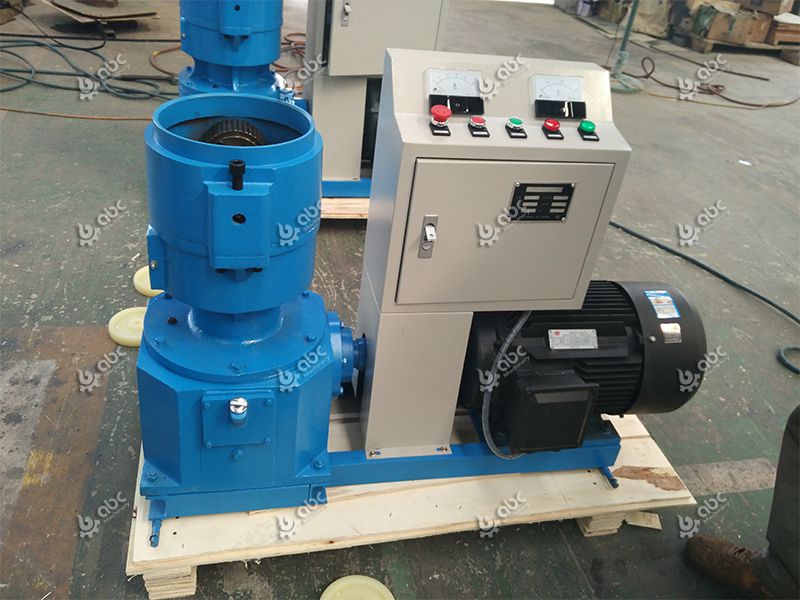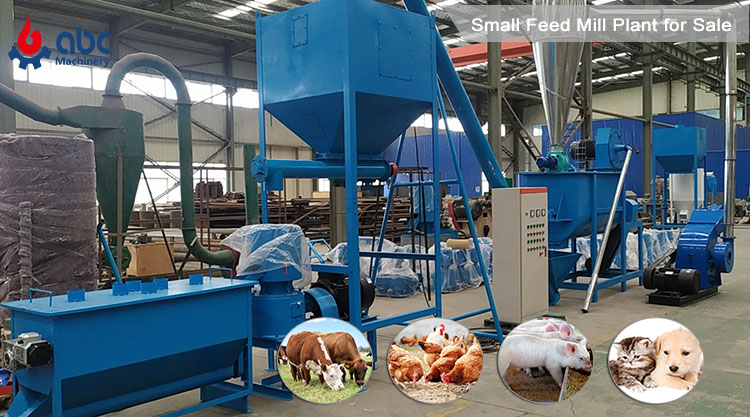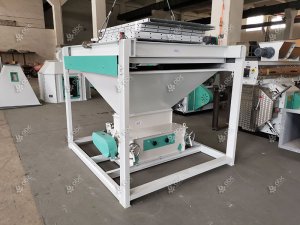Pig Feed Mill Plant Setup and Equipment Selection

Make Feed Pellets for Pigs
ABC Machinery is one of the top pig feed mill manufacturers, undertake customized turnkey project of pig / swine / pigger / hog feed production line for both small scale pilot production and industrial scale production.
Start Complete Pig Feed Milling Plant
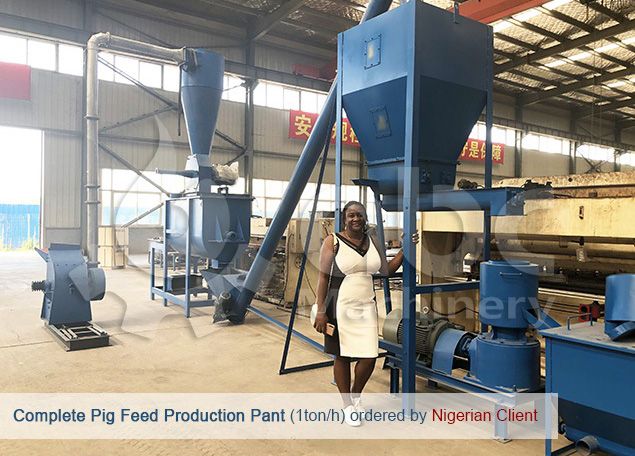
1ton/h Complete Set of Pig Feed Mill for Sale [BEST SELLER]
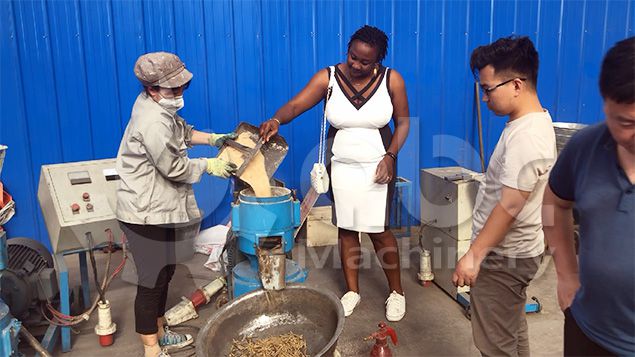
Customer Visit - Feed Mill Manufacturer
For the ones who want to invest in pig feed prcessing industry, setting up a small scale pig feed mill plant of complete process and low cost is the BEST plan. Feel free to contact us for pig feed mill equipment details and latest price list, and get FREE Guidance on pig food making.
Complete Pig Feed Milling Process (Feed Pellets)
What are pig feed manufacturing processes and what are the main feed processing machines for pig? Actually, the feed production process is based on the pig feed plant design. A complete pig feed mill plant might feed crushing machine, feed mixing machine, feed pellet machine, feed pellets cooler and other kinds of auxiliary equipment. (Recent News: 3~5ton/h feed processing machine shipped to Africa)
Within the process there are four main steps:
- Raw Feed Stock Moisture Control
In this step, the aim is ensuring that the moisture of the raw materials used for making pig feed isn't higher than 10-12%. Humid raw materials will hurt the quality of the finished product. There are two ways to dry out the moisture from materials: either using a drier which allows you to quickly reach the appropriate level of humidity or by simply dry the material nature under the sun (which is more time consuming).
- The Crushing and Mixing of Pig Feed
Before making pig feed pellets, it is essential to weigh the materials and combine them according to the formula. The materials need to be crushed either individually for then mixing them or you can first mix them and putting the mixture in the crushing machine, depending on your plan and your facility set up. Crushing is an important step for the creation of high-quality pellets, since the finer the raw materials, the easier the gelatinization, therefore more efficient will be the process of making pellets.
- Making Pig Feed Pellets (Pelletizing)
Pelletizing is the core process of the production of pellets, The feed pellets is produced by the crushed mixture of your raw materials, compressed by pig feed pellet machine. Depending on your feed formula, the feed will be appropriate for pigs in the suckling phase or the growing. During the pelleting stage, temperature, humidity, and pressure should be carefully controlled. These factors have an impact on the quality of the finished pig food products. (Flat die type feed pellet mill for sale >>)
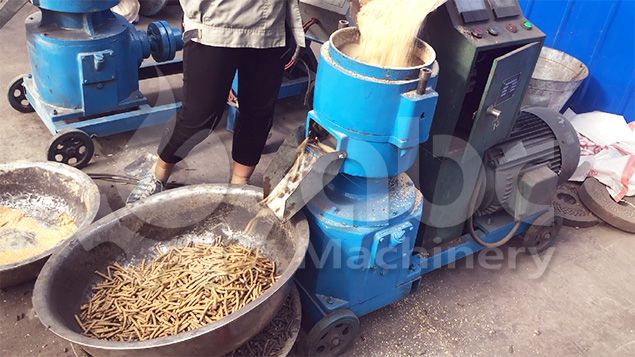
Small Scale Pig Feed Pellet Machine for Sale at Factory Price
You don't want your feed pellet to be too hard, and with a moisture content higher than 10%, the hardness of the pellets will increase. The temperature should range between 82C and 88C because, at low temperatures, gelatinization will not occur. However, if the temperatures are too high, there is a risk of nutrient loss. Keep the temperature stable and within the range for a better quality of pellets. (You may be interested in how to make cattle feed >>)
- Feed Pellets Cooling
The previously created feed pellets coming out from the pig food pellet making machine are hot and soft. To remove the heat and moisture, you have to transfer them into a cooling machine. This will result in feed pellets that are dry and hard. You can decide to store them in bags or transport them for sale.
Project Report: 2 ton/h Animal Feed Production Line for your reference >>
Any questions about establishing pig feed mill plant? We are always here to help you! Our feed processing experts can help you on process design, feed milling factory layout, equipment selection, project construction details and cost.
How Big Is The Global Pig Processing Industry?
You might not be aware of it, but pig / swine / pigger / hog production is the biggest meat industry in the world. The demand for pork meat has experienced a significant increase over the past years, which can be explained by the massive increase in population, the rise of income among the middle class and the consequent expansion of middle-class in fast-growing economies. (Read more about starting feed manufacturing companies >>)
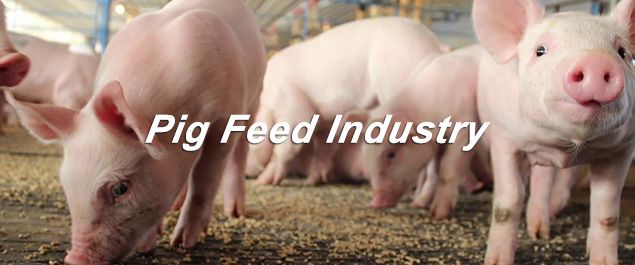
Start Your Own Pig Feed Manufacturing Business
Because of the high demand, the industry of pig production is growing and developing fast, to accommodate the requirements of many consumers. The use of technology helps to optimize the whole supply chain. Today, most of pig husbandry rely on pig feed pellets which have had an enormous impact on the pace of production. More than 1 million pigs are killed every year, and the use of pig feed pellets have turned pig production into an even bigger industry than before.
Let's have a look at what the pig feed pellets are and how they contribute to high-input, high-output trends in the industry of pig production.
How to make pig feed for pig?
The formula to make pig feed pellets include a mixture of cereals, proteins and fats and additives. The most common cereals are corn, wheat bran, rice bran or sorghum. Sources of proteins and fat include bone meal, fish meal and soybean meal. Additives usually contribute to better storage or nutrition and can include spices, sweeteners, vitamins or minerals.
Pigs will have different nutrient requirements according to their growth stage. There are different combinations of raw materials, according to the different stages pigs might be at.
| Pig Feed Formula for Reference | |
|---|---|
|
Piglet (10kg~20kg) |
Corn 60%, wheat bran 10.5%, peanut cake or soybean cake 15%, fish meal 10%, yeast powder 3%, bone meal 1%, salt 0.5%. |
|
Early Fattening (21kg~35 kg) |
Corn 59%, wheat bran 13%, peanut cake or bean cake 15%, flour (corn straw, peanut seedlings, ground melon seedlings, green hay) 5%, fish meal 6%, bone meal 1.5%, salt (salted fish can not be added) 0.5%. |
|
Medium Fattening (36kg~60kg) |
Corn 51.9%, wheat bran 24%, peanut cake or soybean cake 15%, grass meal 3%, fish meal 4.3%, bone meal 1.3%, salt 0.5%. |
|
Late Fattening (61kg~90kg) |
Corn 65.2%, wheat bran 18%, peanut cake or bean cake 10%, grass meal 3%, fish meal 2%, bone meal 1.3%, salt 0.5%. |
What Is The Benefit Of Making Pig Feed Pellets?
Generally, pig feed milling plant can produce two kinds of feed products: in powder (feed mash) or as a pellet. Feed Pellets, however, have increasingly become more popular in pig feed industry for a series of different reasons.
- First of all, pellets are easier for pigs to digest and absorb.
- Additionally, because of the high density and nutrition concentration, pellets can reduce waste and optimize feeding for pig.
- Furthermore, pellets are convenient to store and transport, which make pellets favorable in many contexts.


